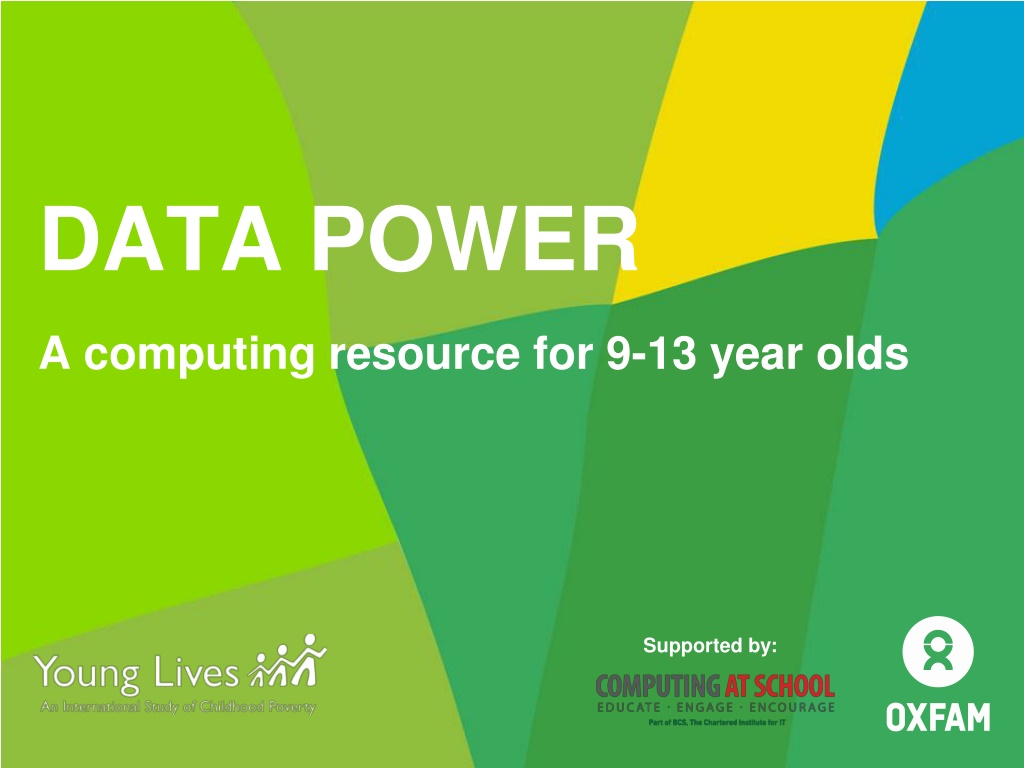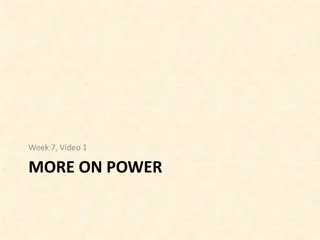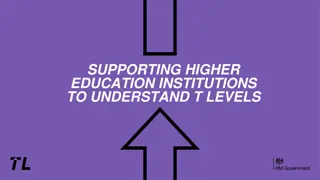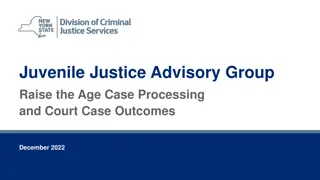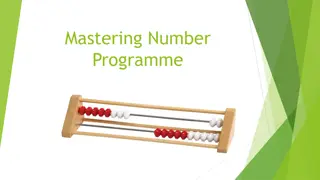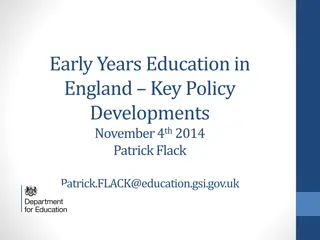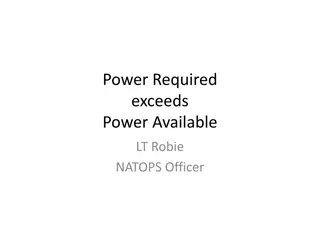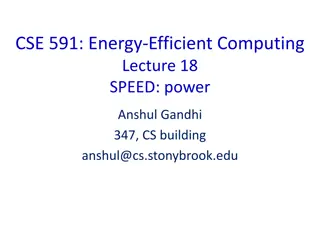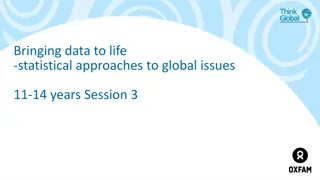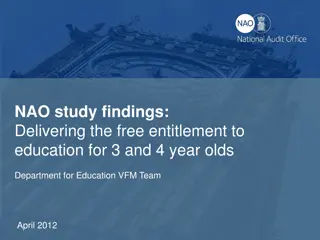Understanding Data Power for 9-13 Year Olds
Explore the world of data with "DATA.POWER," a computing resource for 9-13 year olds. From understanding what data is to learning about different activities and time use, this resource provides insights on how data influences our daily lives. Dive into topics like thinking about data, ways of presenting data, and analyzing time use differences among individuals and groups. Discover how data impacts various aspects of life, from using a phone to going to the doctor, and consider the potential variations in data usage across different demographics and regions. Uncover the similarities and differences in daily time use patterns worldwide through engaging visuals and thought-provoking questions.
Download Presentation

Please find below an Image/Link to download the presentation.
The content on the website is provided AS IS for your information and personal use only. It may not be sold, licensed, or shared on other websites without obtaining consent from the author. Download presentation by click this link. If you encounter any issues during the download, it is possible that the publisher has removed the file from their server.
E N D
Presentation Transcript
DATA POWER A computing resource for 9-13 year olds Supported by:
UNIT 1 Thinking about data
WHAT IS DATA? Data is a collection of facts which can be used to calculate, analyse or plan something. There are different types of data such as numbers, dates, text, images and sound.
WHAT ACTIVITIES DO YOU DO EACH DAY? Caring for others Using a tablet or computer Doing homework Playing with friends After-school clubs and activities Attending school Using a mobile Travelling to and from school Helping at home Sleeping Eating
HOW LONG DO YOU SPEND DOING DIFFERENT ACTIVITIES?
WAYS OF PRESENTING DATA Bar chart Pie chart Line graph Table Activity Sleeping At school Going to after-school club Playing with friends ... Daily time use (hours) 9 7 1 2 ...
THINKING ABOUT TIME USE DATA What differences are there between your time use and that of other people in the class? What might be the reasons for these differences? Do you think this time use data might be different in other classes in the school, for example in a class of younger children? How might time use vary in different parts of the UK, for example in urban and rural areas? What similarities and differences do you think there might be between our daily time use, and that of young people in other parts of the world?
UNIT 2 Data about Young Lives
WHAT DO WE NEED TO DO WELL IN LIFE? Think Pair Share
SHARING OUT THE MONEY Education Health care Transport Leisure facilities Looking after the environment Caring for people Keeping people safe Housing Access to water and sanitation Your idea
WHAT IS YOUNG LIVES? Young Lives is an international research project looking at how poverty is affecting children s lives. It is a led by a team in the Department of International Development at The University of Oxford in the UK. Researchers have followed the lives of nearly 12,000 children in four different countries (Ethiopia, India, Peru and Vietnam) for 15 years, from 2000 to 2015.
WHAT IS YOUNG LIVES? The researchers have collected a lot of data about the children s lives. They have also interviewed the children and some of their families. This is Luz, one of the children interviewed in the project. She is from Peru.
WHERE IN THE WORLD? UK Viet Nam India Ethiopia Peru Can you locate the UK, Ethiopia, India, Peru and Viet Nam on a world map?
AFEWORK ETHIOPIA Here is Afework. In his spare time he likes playing football with his friends and watching TV.
SEBLE ETHIOPIA In this photograph, Seble and a friend are cutting hay feed.
RAVI INDIA Here is Ravi eating his lunch. He is having dahl (lentils) and rice.
HARIKA INDIA Harika has to work hard to help her mother at home.
MANUEL PERU I help my parents in the house and on our farm. We have hens, sheep, a pig and a cow; as well as a dog, a cat and a turkey!
LUZ PERU I enjoy being with my friends at school.
HUNG VIET NAM I want to go to school to have more knowledge. I know that if I can study well, I will have a better life later.
LIEN VIET NAM My favourite subjects are drawing and English.
THINKING ABOUT YOUNG LIVES What similarities and differences are there between the lives of these children and your own life? What similarities and differences are there between the lives of these children? Are there any differences between the lives of the two children from each country? What do you think might be the reasons for any differences? What do you think might be the best areas to spend money on in any of these children s communities? Ravi doesn t go to school. Does this mean that more money should be spent in his community on schools and teachers than on other things?
INVESTIGATING TIME USE Sleeping Work for pay outside of the household Attending school Tasks for family farms or business Studying outside of school Caring for others Domestic tasks Play or leisure activities
THINKING ABOUT TIME USE What similarities and differences in time use are there between children in urban and rural areas, and between boys and girls in each of the four countries? Do you think that all children in each of the countries will have the same time use? What similarities and differences are there between your time use and daily life, and that of these young people? What do you think might be the reasons for any of these similarities and differences? Do you think the differences are fair?
UNIT 3 The power of data
MEASURING WELL-BEING Average income per person Access to water Life expectancy Infant mortality rate Access to electricity Primary school enrolment
MEASURING WELL-BEING Mobile phone subscriptions CO2 emissions Internet users Percentage living in extreme poverty Inequality score Population
MEASURING WELL-BEING Indicator Ethiopia India Peru Viet Nam UK Average income per person (US$) 619 1,582 6,122 2,111 43,734 Life expectancy (years) 64 68 75 76 81 Access to water (% of total population) Primary school enrolment (% of relevant age group) Access to electricity (% of total population) Infant mortality rate (per 1,000 live births) 57 94 87 98 100 86 92 93 98 100 27 79 91 99 100 41 38 13 17 4 CO2 emissions (tonnes per person per year) Mobile phone subscriptions (per 100 people) Internet users (per 100 people) Inequality score Living in extreme poverty (% of total population) Population (millions) 0.1 1.7 1.9 1.7 6.4 43 79 110 131 126 12 26 41 53 92 33 35 44 38 33 34 21 3 3 No data 99 1311 31 92 65
WHAT DOES INEQUALITY MEAN? We can think of inequality as the difference between the things which some groups of people have, compared to other people. It is a bit like looking at how a big a slice of cake one person has, compared to another.
THINKING ABOUT INEQUALITY Inequality is not just about how money is shared between and within countries. There can also be inequality in the kinds of opportunities people have in life.
